They say that the sun always shines after a storm. In the wake of two days of excitement and ups and downs, this afternoon’s third game in Chongqing was an oasis of peace and tranquillity. After three of the six scheduled classical games, the Women’s Candidates final is now tied 1.5-1.5.
Playing with White, Tan Zhongyi switched back to her normal opening repertoire with 1.d4, side-stepping Lei Tingjie’s excellent opening preparation in the first game. Her bold play in that encounter was rewarded, but readers will recall that luck was definitely on her side in the critical moments – she didn’t seem to be so familiar with the nuances of the variation.
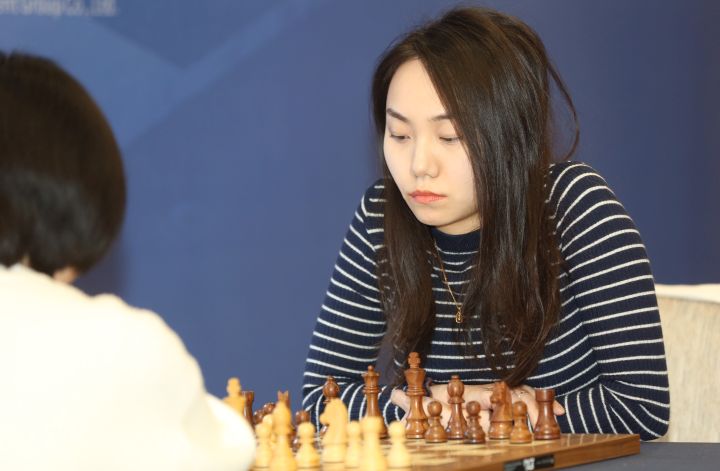
Lei Tingjie opted for the Tarrasch variation in the Queen’s Gambit, with 3…c5. According to my database, this is the first time she has played this line in her career: a risky choice.
Tan Zhongyi thought for a moment and decided to repeat the same variation she had played recently in an online blitz game. Instead of the most theoretical line with 6.g3 – which would have permitted the fashionable “Dubov “ 8…Bc5 system, Tan Zhongyi went for the solid 6.dxc5, considered to be very slightly better for White.
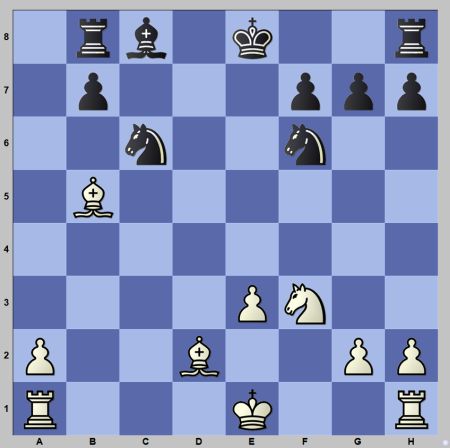
Both players demonstrated excellent opening preparation, blitzing out their moves at an unusual speed for this kind of event. The queens were exchanged very soon, and around move fifteen, both players were already facing the prospect of yet another minor piece ending.
White did enjoy the advantage of the two bishops in an open position, but the weak pawn on e3 somewhat restricted the activity of the dark-squared bishop. The engine suggests that the position is approximately equal.
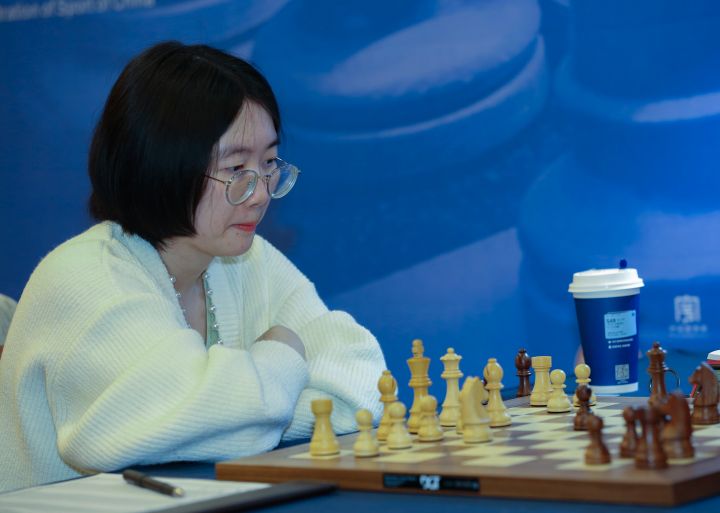
Shortly afterwards, Lei Tingjie correctly sacrificed a pawn to activate the rest of her pieces, receiving full compensation – both of her rooks occupied active lines while the bishop on a6 and the knight on f6 were on the lookout for a killing blow.
In these positions, one has to be careful. Tan Zhongyi went into defence mode, swapping off all of her opponent’s active pieces, with the unfortunate downside that she wasn’t able to avoid transitioning into yet another opposite-coloured bishop ending.
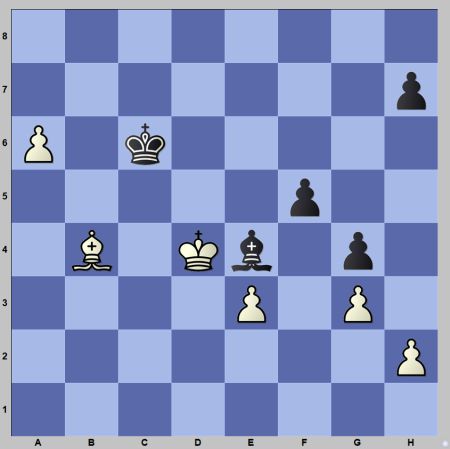
Although still enjoying the advantage of her extra pawn, Lei Tingjie had no trouble at all defending the very simple fortress that this type of endgame provides. A draw was agreed on move forty. According to the online precision ratings, both players scored 98%, with no mistakes and no imprecisions: a remarkable feat.
“A calm game, with really not much happening. Both players played well and solid chess,” reflected GM Alik Gershon on the live stream. WIM QiuMengjie added: “This game had no mistakes, but the fourth game will be a crucial encounter for both players, with Lei Tingjie playing White.
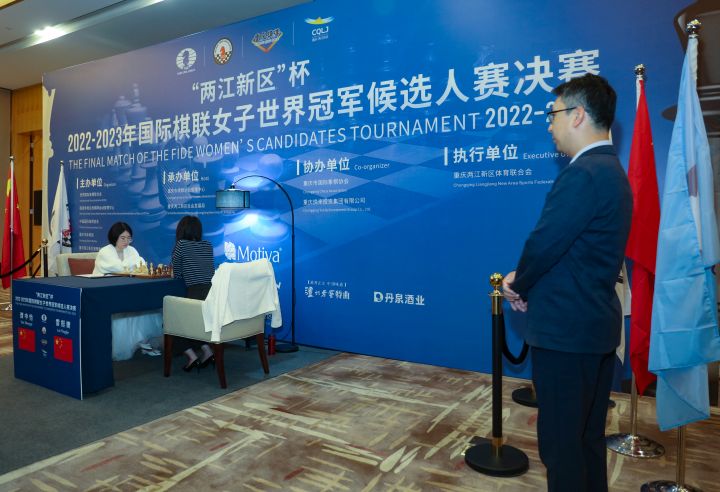
Both players will enjoy a well-deserved rest day tomorrow, and the match will resume on Sunday, April 2nd with Lei Tingjie conducting the White pieces.
You can follow all the games with with top-notch commentary by GM Alik Gershon and WIM QiuMengjie on the FIDE YouTube Channel.
Text: IM Michael Rahal
Photo: Liu Yi
Official website: womenscandidates.fide.com/
The match
The 2023 FIDE Women’s Candidates Final is being disputed in Chongqing (China) from March 27th to April 6th. Chinese Grandmasters Lei Tingjie and Tan Zhongyi face each other in a six-game classical chess match. The winner will receive 60.000 euros and the right to challenge the current Women’s World Champion Ju Wenjun for the title in July.
The venue
Strategically positioned as a gateway to China’s west, Chongqing is China’s major modernized manufacturing base, a financial center, and an international transport hub in Western China.
Home to more than 32 million people, it was an obvious choice for hosting the event as both players were born in the city.
In addition, it’s an important center of chess activity in the country, abode to many important chess clubs and academies. A fun fact – both Lei Tingjie and Tan Zhongyi are teammates at the Chongqing Sports Lottery Chess Club.








